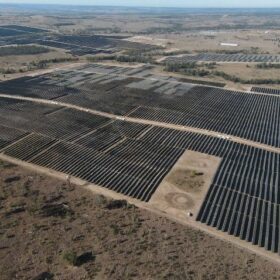Research director Alex Whitworth said: “President Xi Jinping surprised the world by announcing to the UN General Assembly that China has set a target to become carbon-neutral by 2060. With this announcement, the world’s largest carbon emitter finally shifted from its long-term position of having limited responsibility to reduce global emissions as a developing country, to assuming clearer leadership in tackling climate change. President Xi also stated that China will reach peak emissions before 2030. The world’s largest, and growing, energy market, China currently contributes about 28% of global emissions.
“Yesterday’s announcement was framed as a direct response to the coronavirus pandemic and the more recalcitrant position of the Trump Administration towards the 2016 Paris Agreement. Imploring urgent reforms in the systems of global governance towards a greener and more sustainable pathway, President Xi called on all countries to “stop only pursuing development rather than environment protection.” Clearly for China this needs to start at home, though the signal that China intends to take a greater and more vocal leadership role in global environmental protection was clear.”
Asia Pacific vice chair Gavin Thompson added: “Of course, big questions remain. Firstly, China’s definition of ‘carbon neutrality’ is not well defined from the short announcement. Further, no roadmap was offered as to how this will be achieved. 2060 is a long time out and immediate, concrete steps have yet to be announced. But China’s upcoming 14th five-year plan has the potential to be the most important document in global energy market history. Increased investment in wind, solar, electric vehicle and battery storage technology deployment will almost certainly feature, and we can expect support for green hydrogen and carbon capture technology. It won’t of course be the complete roadmap and I expect clean coal will continue to receive strong support.
“But if any country can achieve such ambitious goals it will be China. Strong state support and coordination have proven extremely effective at reaching economic goals; if this is now directed towards climate change then China is capable in transforming its carbon emissions trajectory over the coming four decades in exactly the same way it has transformed its economy over the past 40 years.”
Asia Pacific head of markets and transitions Prakash Sharma said: “China currently emits over 10 billion tonnes of carbon and will need to make significant efforts to reach net-zero without affecting it economic development.
“In Wood Mackenzie’s recently released Accelerated Energy Transition Scenario (AET-2), we have China’s emissions fall nearly 60% by 2040 from 2019 level using electrification, renewables, green hydrogen and carbon removal technologies. We expect China will need to deploy over a billion tonnes carbon, capture and storage capacity across its power and industrial sectors. These efforts will need to start much earlier and at a higher scale to deliver on carbon-neutral goal by 2060.
“The impact on global energy and commodity markets and seaborne trade is significant in our AET-2 scenario. Major commodity exporters’ strategies are reset too to align with China’s ambitions.”






By submitting this form you agree to pv magazine using your data for the purposes of publishing your comment.
Your personal data will only be disclosed or otherwise transmitted to third parties for the purposes of spam filtering or if this is necessary for technical maintenance of the website. Any other transfer to third parties will not take place unless this is justified on the basis of applicable data protection regulations or if pv magazine is legally obliged to do so.
You may revoke this consent at any time with effect for the future, in which case your personal data will be deleted immediately. Otherwise, your data will be deleted if pv magazine has processed your request or the purpose of data storage is fulfilled.
Further information on data privacy can be found in our Data Protection Policy.